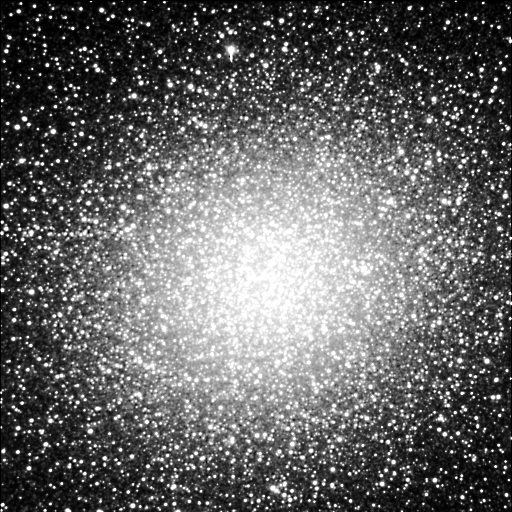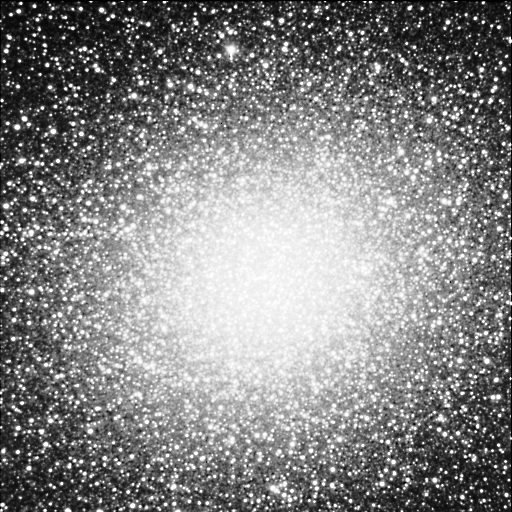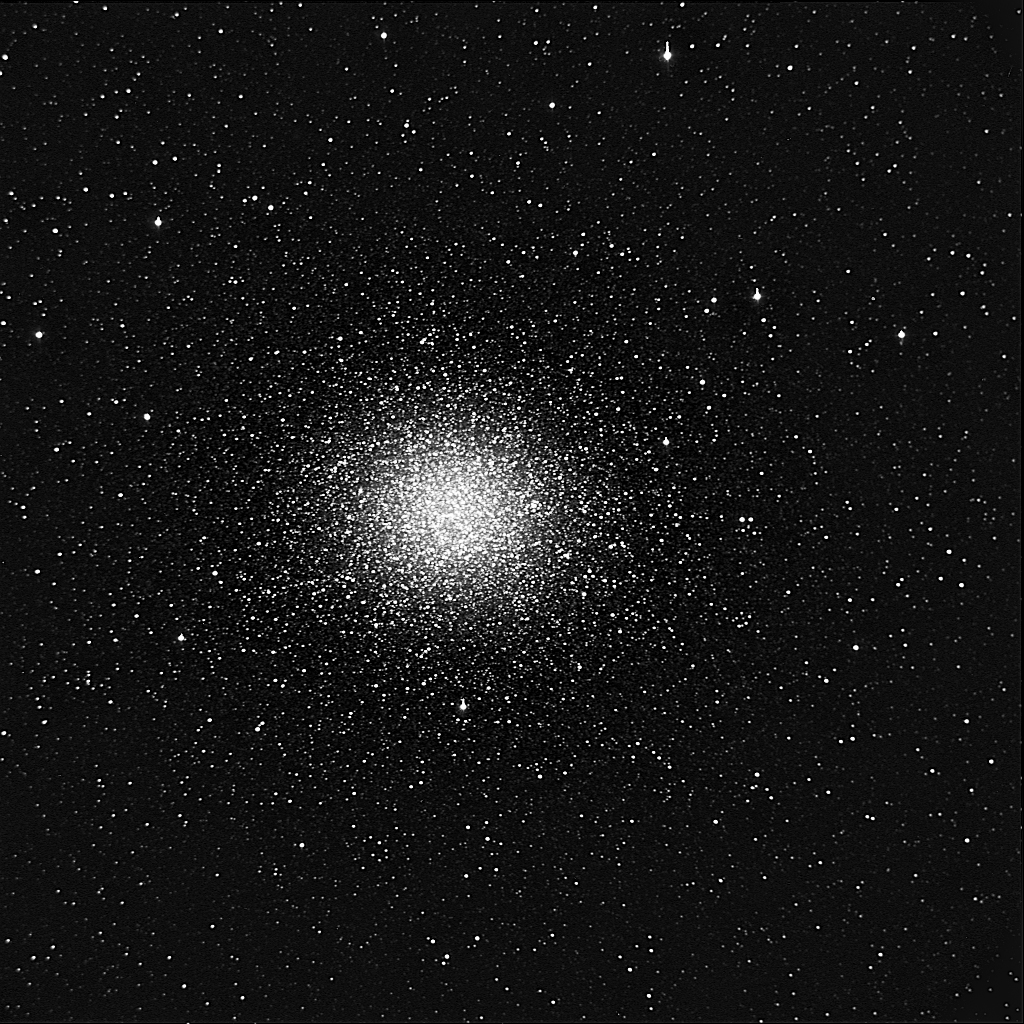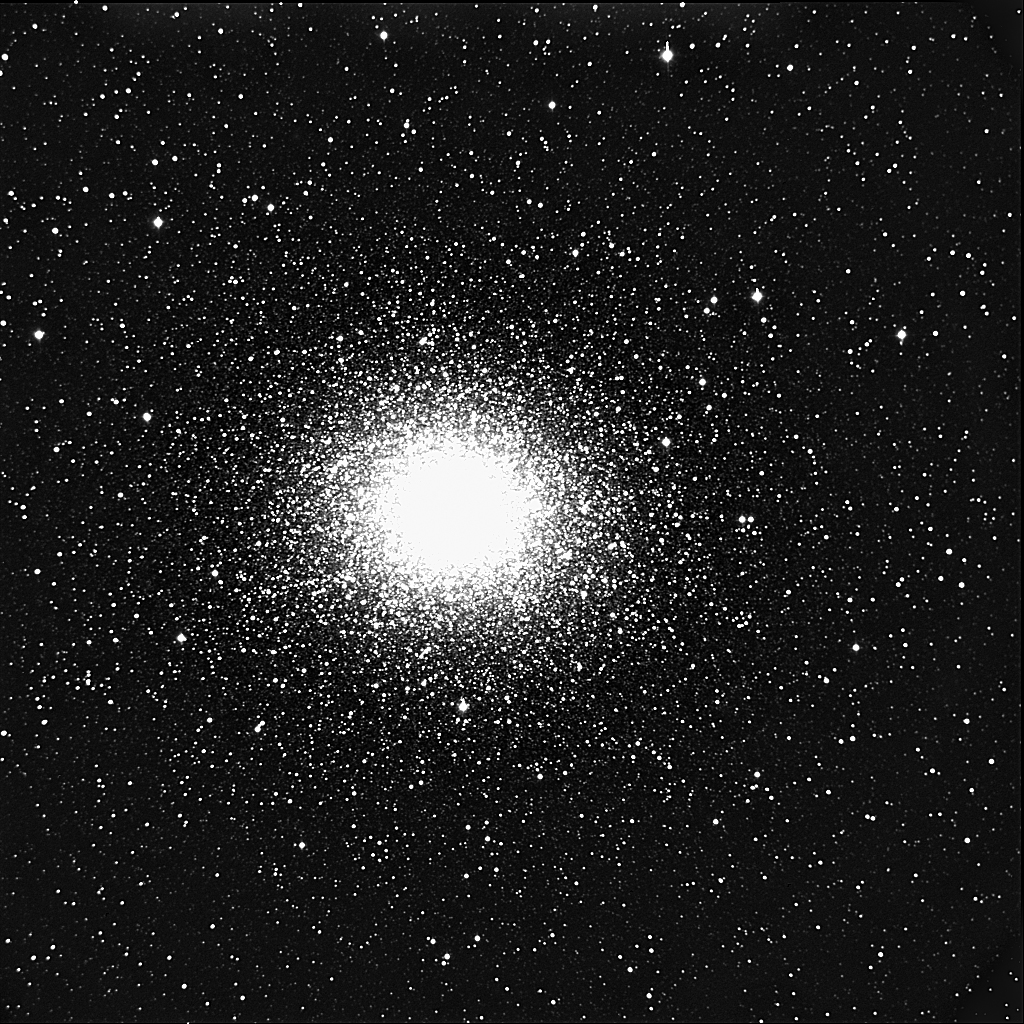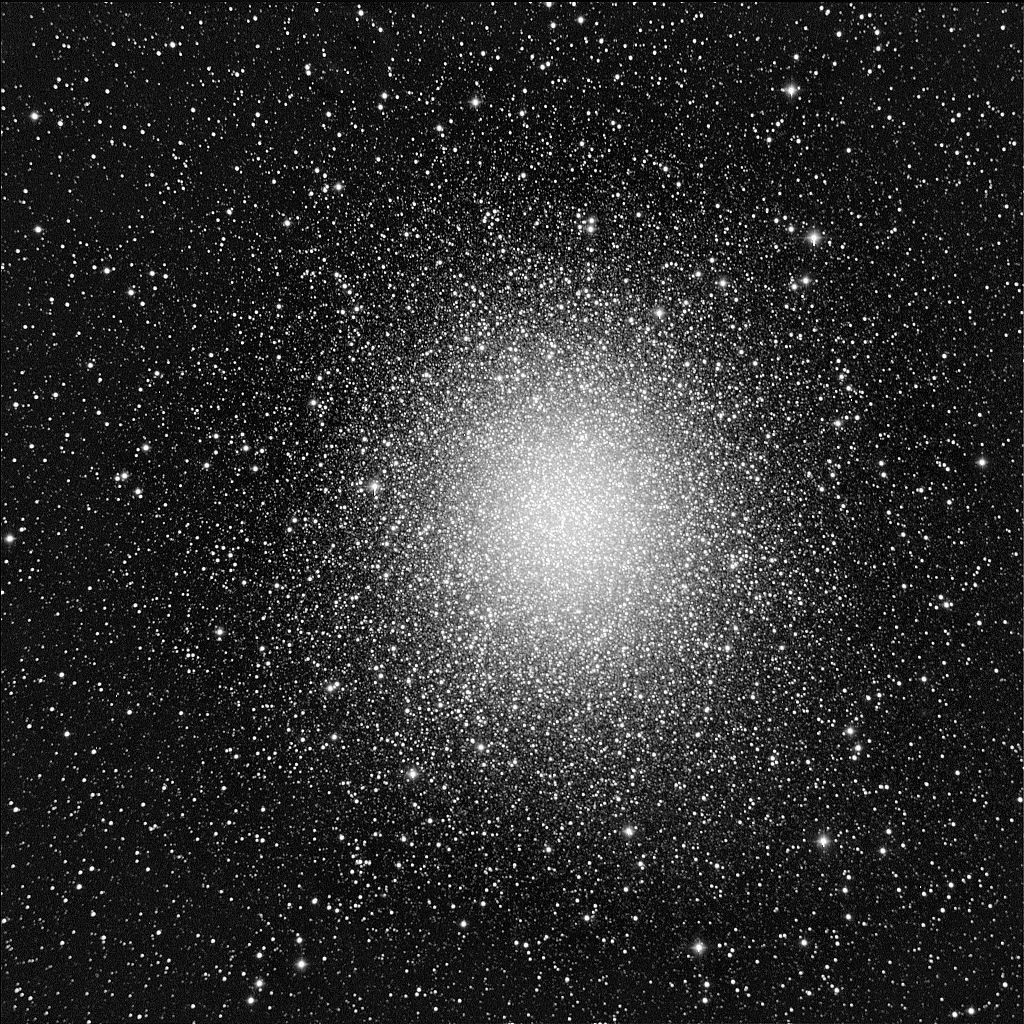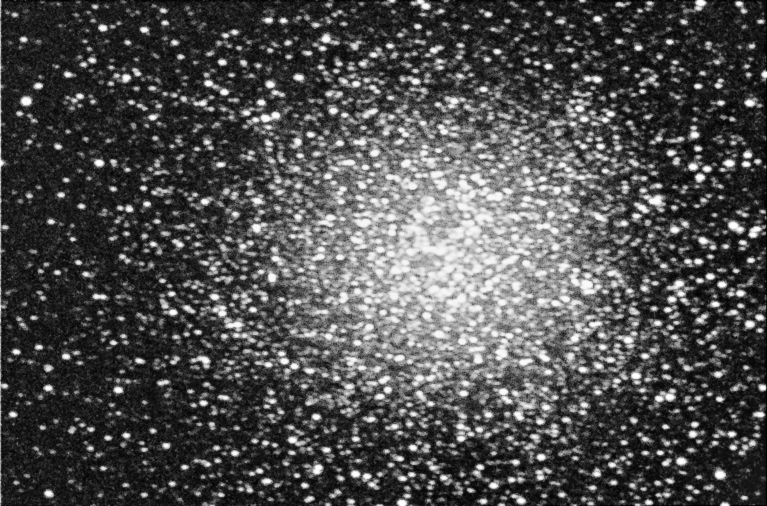
3 minutes exposure, Meade 416xt CCD.
8" f/6 newtonian telescope at prime focus.

The magnificent globular cluster omega centauri really needs no introduction. Easily visible to the naked eye even in moderate light pollution, it is the largest and brightest globular cluster in the sky, and vies with 47 tucanae (NGC 104) as the most spectacular globular cluster in the sky.
Binoculars are sufficient to show the non-stellar nature on omega centauri, showing it as a nebulus ball. In an 8" telescope the cluster is a fine sight with hundreds of pinpoints of light set against a background haze. In a 12" telescope or larger, the cluster is a really magnificent sight of blazing stars filling the field of view.
